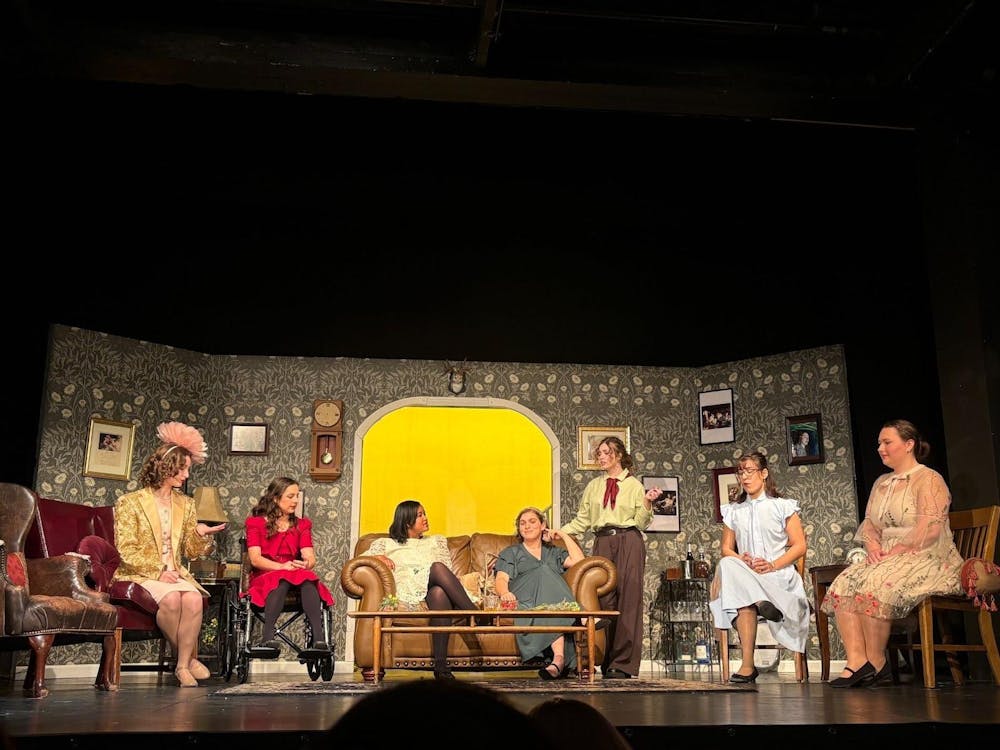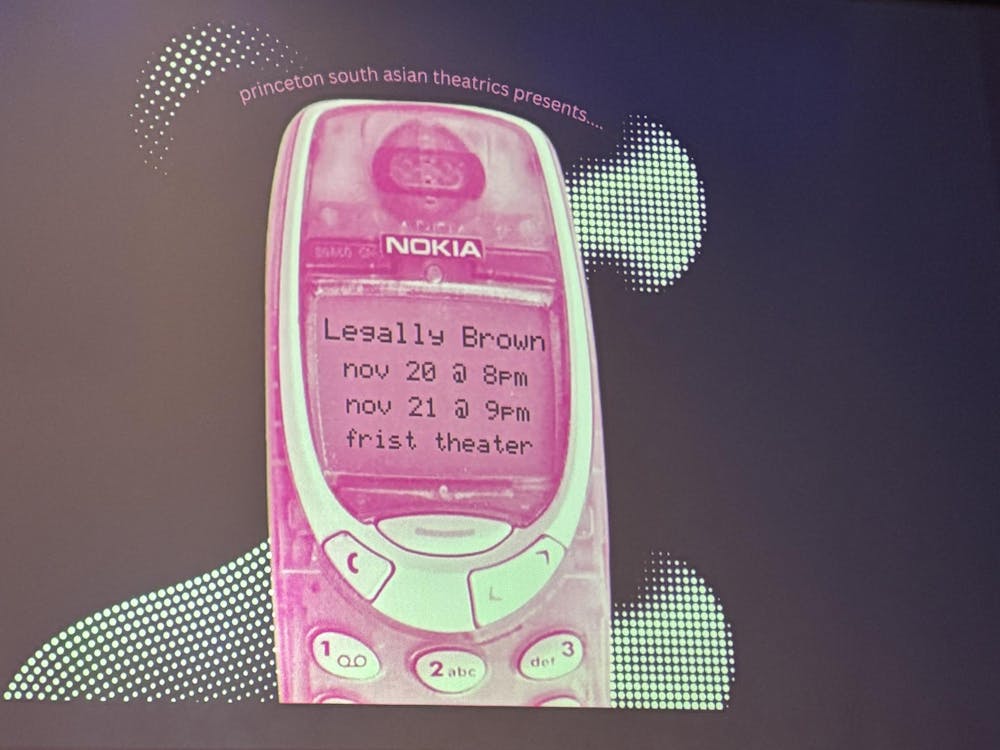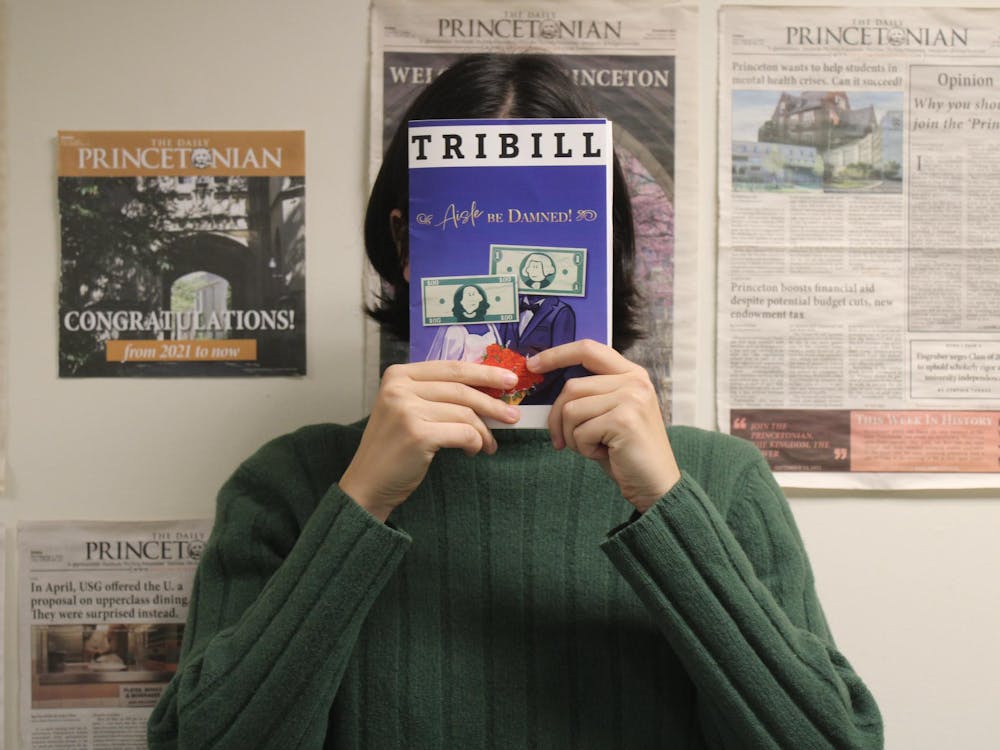“Gene Kelly, tap dancing and a lamppost.” In his program note, actor William Cohen ’16 lists what most people associate with “Singin’ in the Rain.” Made famous by Gene Kelly’s iconic performance in the titular number in the 1952 film, a musical theater classic about Hollywood’s shift from silent film to talkies.
The Lewis Center for the Arts’ recent production, directed and co-choreographed by Adin Walker ’16, does something different. As Cohen continues, “With this production, I wanted to play homage but also reinvent. I wanted to play Don Lockwood, not Gene Kelly.”
The Lewis Center’s production does exactly that: pay homage and reinvent. In other words, the production successfully breathes new life into the classic.
The primary vehicle through which the production reinvents is the music. Some songs are performed traditionally, but most songs are performed almost as acoustic covers of the originals. These acoustic covers include “Fit as a Fiddle,” the vaudeville number Don Lockwood (Billy Cohen ’16) and Cosmo Brown (Allen Hernandez ’16) perform and “You Were Meant for Me,” the ballad Lockwood sings for his love interest Kathy Selden (Madeline Reese ’16). Just as the Golden Age music of the original “Singin’ in the Rain” score was trendy for a 1950s public, so are these acoustic covers “hip” for Princeton’s 2016 audience.
A number of songs are performed traditionally, with an excellent rendition of “Good Morning” and an iffy if not explicit version of “Make ‘Em Laugh.” But more interesting are the songs that fully swerve off of their traditional rendering, some being more successful than others. “Beautiful Girls,” traditionally performed as a big ensemble number while being filmed for the movie, is here performed as a more intimate piece between Jared Hopper ’18 and Kamber Hart ’16. As the doll-like subject of Hopper’s heart in this pseudo-dream sequence, Hart fills the dancing and acting requirements of the role with aplomb. Hopper and Hart’s duet elicits themes of unrealistic expectations in beauty, abusive relationships and structural misogyny found in American musical theater.
Less successful is the production’s reinvention of “All I Do is Dream of You.” In a more traditional performance, Selden, working as a party entertainer, jumps out of a fake pastel pink cake and performs with fellow pink-clad dancing girls. This production keeps the cake, but changes the costumes; instead of scantily-clad entertainers, the production features dancers wearing, playing and dancing with balloons. Not only does the change make the details inconsistent, but the balloons become a logistical nightmare: hand-offs are sloppy and balloons wander around the stage — the aesthetic hardly works. Surely there would be a more effective way to contemporize the party scene.
All in all, props are excellent — including umbrellas and musical instruments make frequent appearances — most especially in Alexander Quetell’s ’17 performance on a saxophone in “Moses Supposes.” The use of flower petals as stunt devices provides an aesthetic and low-maintenance stage effect when used to recreate the pie-throwing scene and when used as a continuation of a dancer's movement.
Occasionally, clever props are not implemented to their full potential. The titular song falls flat when mirrors — an atypical but brilliant prop choice for the number — are incorporated too late to be effectively used.
There are many brilliant performances, especially including Cohen ’16, Reese ’16, Hernandez ’16, Stanley Mathabane ’17, Ross Barron ’17, Hopper ’18, Hart ’16 and Quetell ’17. But most impressive is the new, contemporary life brought to the production by Walker ’16, a revitalization that would surely “Save Lockwood and Lamont.”






